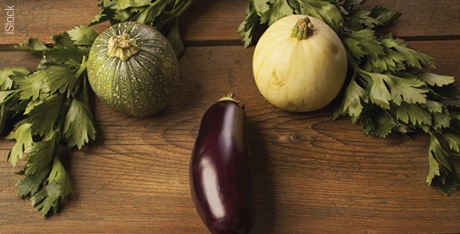The kitchen table in my new, modern townhouse made its first debut in the theater of my family life before I had a family. We were a young couple without kids living in a sweet, one-floor Victorian with a small adapted kitchen with no cupboards, vents or proper countertops — attached to a sun-filled and rather snug room being asked to function as a dining room. It was all OK with my husband and me; in many ways we were also being asked to function in ways to which we weren’t accustomed.
Without a place to eat in the makeshift kitchen, we began the search for a dining room table that our budget and different tastes would allow. I was lucky to have an uncle in “the business” who called in a chit to a guy who called in another chit and landed us a suitable table for a very absorbable price. Buying things that were above $99 had to be well-justified, and we declared this to be a long-term investment; it was built to last.
Today the table sports a gray and cream scrolled tablecloth, courtesy of my mother and Williams-Sonoma, in my spanking new dining room. As nice as it looks, it doesn’t seem right to keep the table covered, despite its bruised appearance. It has graced two kitchens and two dining rooms in four different homes over 28 years. It started out as a pine table with a natural stain and two leaves that were easy to insert. It’s now of the “distressed” but fashionable style, painted white on the top and black on the base, and it screams, “I’ve been here for a while.”
I was ready to go Zen. Less is more.
The surface has been mauled by my sister’s carbonated black Labrador retriever, scarring it with parallel divots made by three-clawed paws. The babies’ clip-on seats left impressions like little roads on the far left. My 10-yr-old football player left a leaking sports bottle on the other end, and the moisture caused the trim on the edge to peel away, so now one end juts out, but only a little, and nobody seems to mind. A friend tried to fix the broken edge once, but alas, he lost interest and left it worse for the effort. The table had taken another hit, blindsided by good intentions.
Last year at this time I was sorting, rummaging, piling, discarding and donating 13 rooms of furniture, in preparation to downsize into my new home. I worked on this project for months, determined to unburden myself of everything I really didn’t need, want, or feel hugely attached to. I was ready to go Zen. Less is more. What could be better than having someone else use my things that I no longer really wanted? Come one, come all, and they did, and my pickings got slimmer and slimmer. But nobody wanted the weary table, and I found that I couldn’t give it up anyway.
I was a child of the late ’50s. My parents served all four of us a family meal soon after 5:30 p.m. when my father had come home from work, removed his boots, and read through the first section of the newspaper. Mom rang the bell on the front stoop, and we assembled from all corners to sit in our places and eat the meal she prepared for six of us, every night. We sometimes had a starter of some kind, like sectioned grapefruit halves, and that felt very special, particularly when I did the slicing and placed the maraschino cherries on each serving. The food wasn’t gourmet, and the conversation usually centered on who did what and when, stories of our friends, and any other gossip we could find.
I’m not ready to part with the memories that sit around my table.
On occasion, punishments for bad behavior got doled out. We shared our good news, and there were announcements too, as the pasta got passed around.
“We are all going to visit the cousins on Sunday.”
“There will be no more TV until homework is done.”
It was at that table that I learned that Papa had died. It was there, on the far end, where my grandmother sat, after Papa had been buried. The table provided the set for countless scenes of family life — the good, the bad and the forgettable. When my mother replaced that table years later, she looked for one that was almost exactly the same. Memories were overlaid on the new table, preserved, because it was so similar to the original.
I’m not ready to part with the memories that sit around my table. All the family dinners that I too laid down, not just because I loved nurturing my family, but also because I knew that a family that comes together once a day, even briefly, feels more connected and supported.
The table was also the de facto command center of our home. We sat there and discussed my first breast cancer diagnosis, when a friend rang the bell and entered, placed a small pot of violets at its center, and sat down to be part of things. It’s where we sat for college planning, years of homework, and birthday parties. It’s where we created budgets and imagined vacations, sorted bills and divided tasks, constructed poster boards for science night, and tutors leaned over my shoulders. Just before I moved, the table was silently draped with a blanket by the home-visit vet who came to tenderly send our beloved Cosmo to dog heaven.
Most of the time now I sit at this table alone, at least in the physical sense. The table is a totem, a touchstone, a book of short stories, and a canvas of wonderful memories to warm my heart. The memories often join me, and they happily show up just as I did when the dinner bell had been rung so many years ago.



